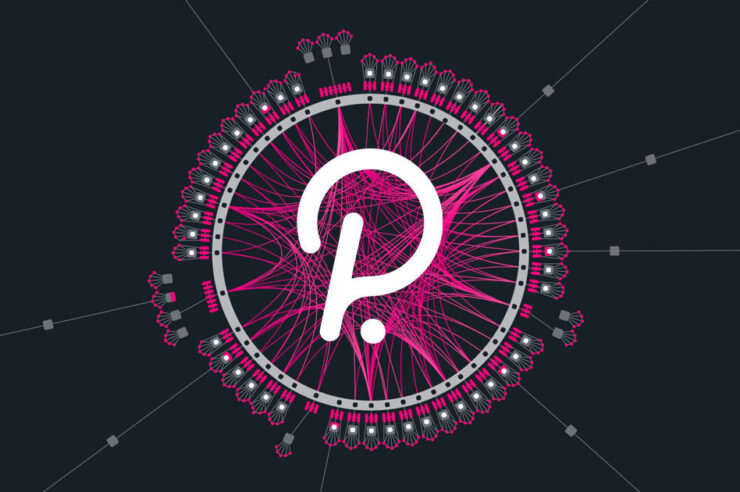What is Polkadot (DOT)?
Polkadot (DOT) stands as a scalable, secure, and decentralized multi-chain network poised to shape the future of the web. It’s constructed using Substrate, a framework enabling the creation of bespoke blockchains composed of either custom or pre-built components.
The primary goal of Polkadot is to usher in a fully decentralized web ecosystem where users retain control. To achieve this, it employs an interoperability protocol that utilizes segments, or shards, to scale the network. This framework facilitates the seamless connection of private chains, public networks, and oracles, fostering a new paradigm where independent blockchains can exchange data and transactions trustlessly.
At the heart of the Polkadot ecosystem lies DOT, its native token currency. DOT serves a myriad of functions including facilitating payments, network governance, staking, reward incentives, transaction fees, and other bonding processes. These bonding processes entail the locking up of tokens as part of integrating new chains into the Polkadot network or assuming various roles within the ecosystem.
In contrast to many other cryptocurrencies, DOT does not possess a finite supply. This intentional design choice is geared towards incentivizing network participation and dynamically adjusting based on user staking rates, with an inflation rate of up to 10% per annum.
How Does Polkadot Work?
Polkadot facilitates the transfer of funds between digital wallets through a system of public and private key cryptography. The hash of the public key serves as the address for receiving funds, while the private key functions as a password, authorizing and broadcasting transactions to the network. Approximately every six seconds, these pending transactions are confirmed within a block of transactions, collectively forming the Polkadot blockchain.
However, Polkadot offers much more than mere fund transfers. It operates as a sharded multi-chain network, overseen by a central Relay Chain that enables the processing of data and transactions across multiple chains in parallel, known as Parachains. Its sharded architecture divides the network into individual segments or shards, thereby enhancing transaction throughput by allowing parallel processing on each shard, rather than sequentially across the entire network as seen in older blockchain models.
Multiple Parachains can connect to Polkadot, leveraging the network’s security to significantly enhance scalability, interoperability, and cross-chain functionality, while mitigating congestion, high fees, and compatibility issues prevalent in traditional blockchains. Polkadot seamlessly manages upgrades without necessitating hard forks, thanks to a governance system governed by DOT native token holders.
To coordinate network activities, Polkadot employs a Nominated Proof-of-Stake (NPoS) consensus mechanism, rewarding users for locking up DOT tokens through a process known as staking, as opposed to the mining incentives seen in Proof-of-Work blockchains like Bitcoin.
Stakeholders interested in network maintenance can operate Validator nodes, while Collators manage Parachain nodes, and Fishermen nodes oversee network integrity. DOT holders can also participate as Nominators by staking tokens and selecting up to 16 Validators as trusted candidates to support with their stake. Validators are responsible for producing new blocks, validating Parachain blocks, and ensuring finality. Further elaboration on these roles will be provided later on.
How To Use Polkadot?
Polkadot (DOT) offers diverse utility to various entities and individuals. It presents an alternative, decentralized payment method that operates independently of intermediaries, granting greater autonomy over one’s finances.
Furthermore, Polkadot (DOT) can serve as a tool for speculation and investment, or as a cost-effective alternative for slow international transfers. Additionally, it has the potential to contribute to the development of an alternative financial system accessible to the hundreds of millions of individuals with smartphones but lacking access to traditional banking services. Moreover, DOT staking introduces new opportunities for income generation or supplementation.
Polkadot furnishes an interoperable, scalable, secure, and decentralized platform, addressing the limitations of legacy blockchains and their associated high transaction fees. This creates avenues for a myriad of use cases across various sectors, including decentralized finance (DeFi), oracles, digital collectibles, gaming, Internet of Things (IoT), privacy solutions, cross-chain interoperability, and more.


